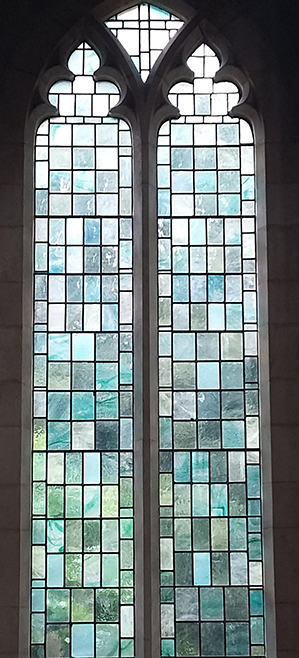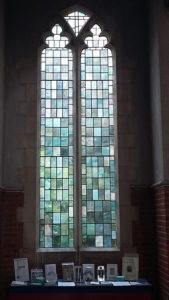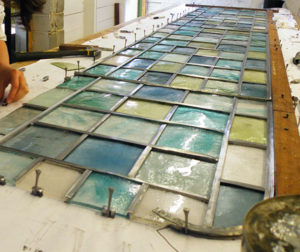
St. George’s Headstone, Harrow
New Design
St. George’s, Headstone, Pinner View, Harrow.
The installation of new leaded lights, using ‘Norman Slab’ glass, inspired by designs by Christopher Whall and his pupils.
An elegant 20th century church, completed in 1911, St. George Headstone was designed by Birmingham born architect J.S. Adler. It contains some fine stained glass windows from the period, notably the Te Deum East window by Martin Travers (1886 – 1948), installed in 1937.
For this project two plain glazed windows on the north and south elevation of the church were removed and replaced with leaded lights containing Norman slab glass, salvaged from St. Martin-in-the Fields Church, London. This glass was produced by the well-known Whitefriars Company, who were probably the only people producing this type of glass at that time. Produced by blowing glass into a square mould; the resulting box of glass is then cut into small rectangles which are thicker in the centre than at the edges. The glass is beautiful and interesting in the way it holds and transmits light. It was much favoured by stained glass artists from the Arts and Crafts, and later; these new additions perfectly complement the nearby Whitefriars windows of Alfred Fisher and Liddall Armitage. At the suggestion of art historian Peter Cormack, and in in sympathy with this aesthetic, the lead pattern was inspired by a pattern book prepared by Christopher Whall and his pupils in 1900.
The leaded lights are beautiful and hugely successful, emphasising the importance of good design, and the best materials for the production of plain glazing.




